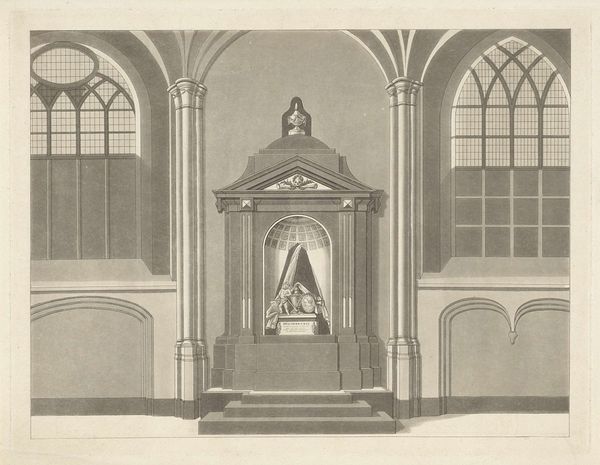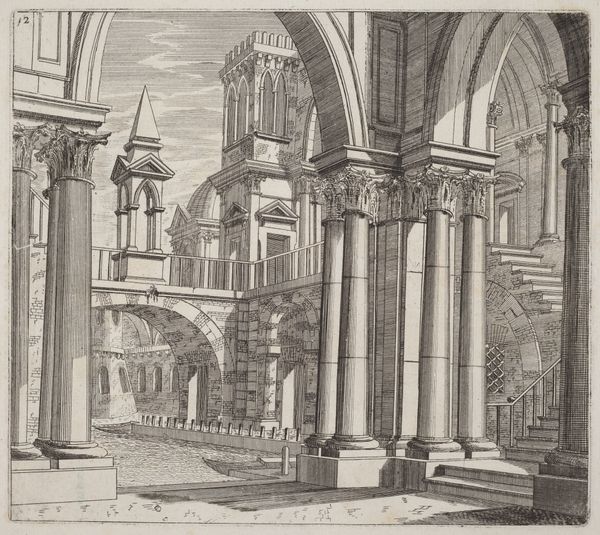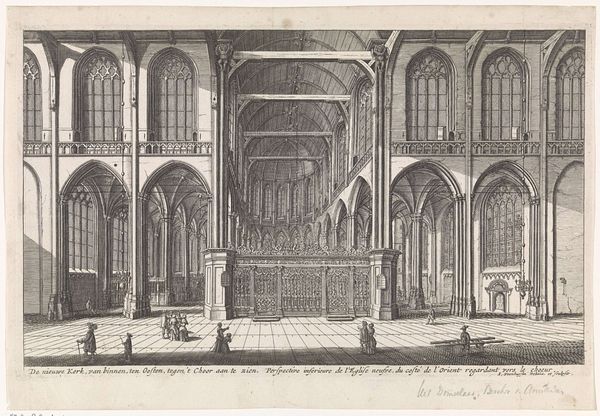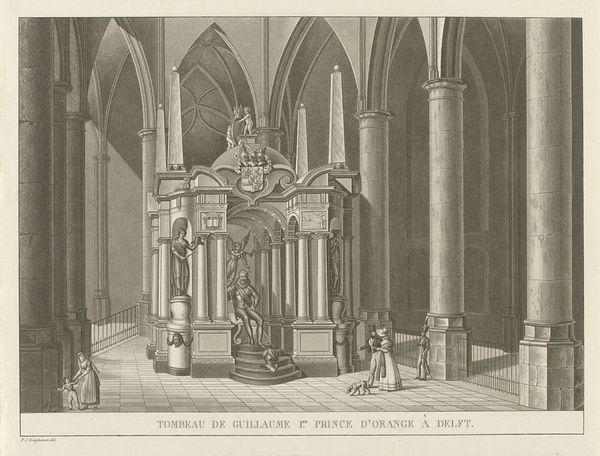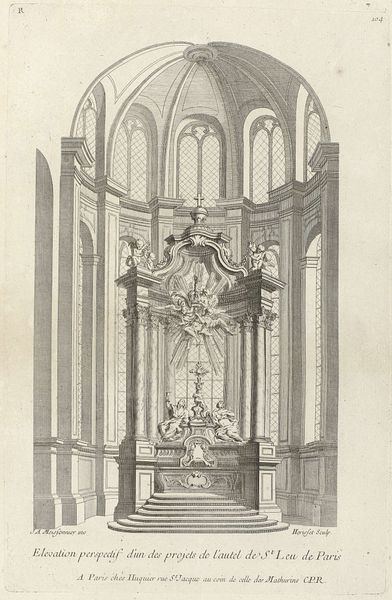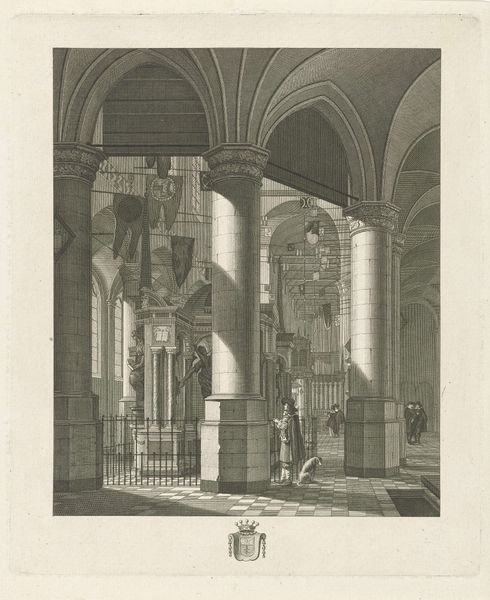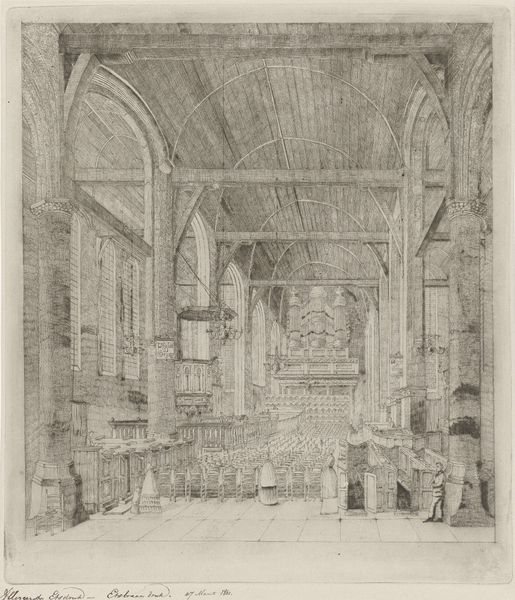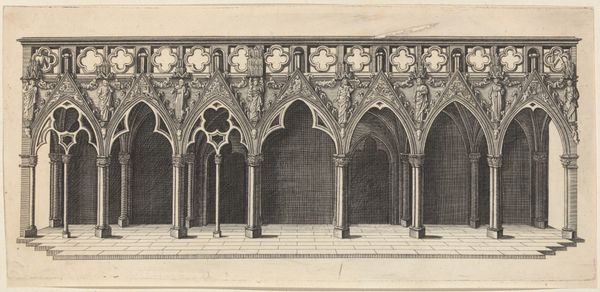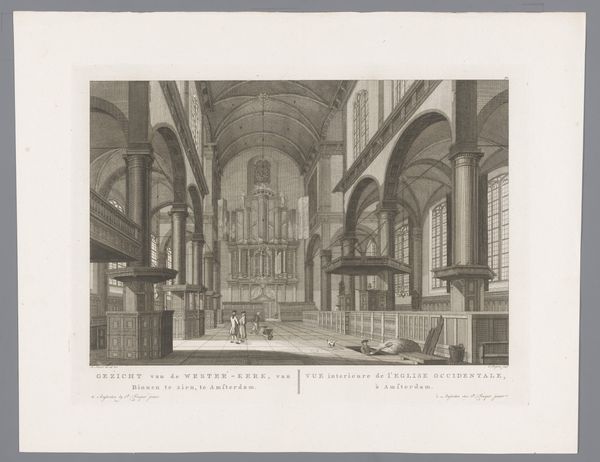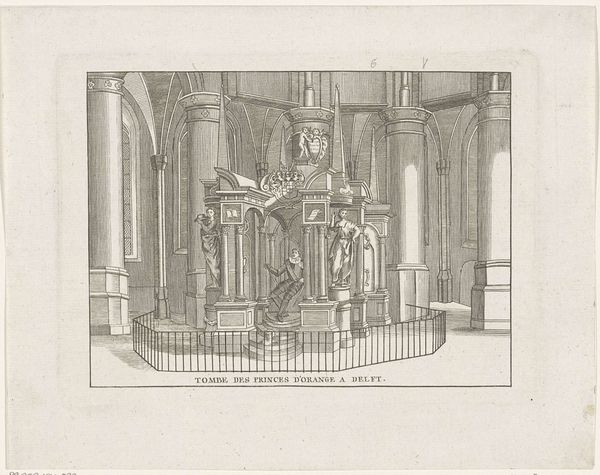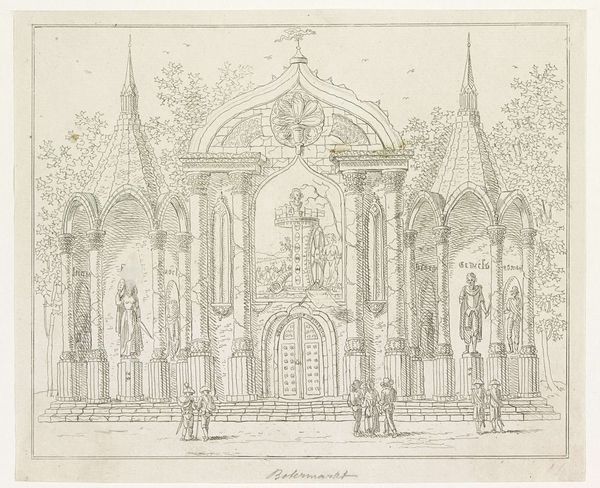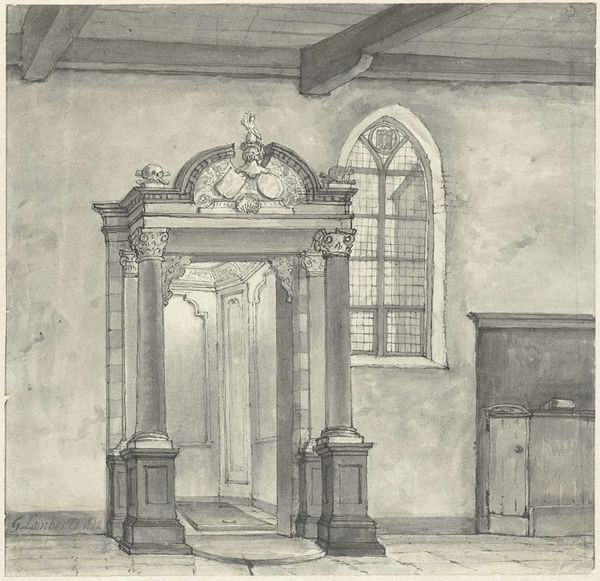
drawing, print, engraving, architecture
#
architectural sketch
#
drawing
#
neoclacissism
#
aged paper
#
light pencil work
# print
#
pencil sketch
#
old engraving style
#
sketch book
#
landscape
#
personal sketchbook
#
idea generation sketch
#
sketchwork
#
geometric
#
line
#
history-painting
#
heavy shading
#
engraving
#
architecture
#
realism
Dimensions: height 225 mm, width 291 mm
Copyright: Rijks Museum: Open Domain
This is a rendering of the Tomb of William I, Prince of Orange, made by Johannes Cornelis Zürcher, in 1823. Zürcher has used etching, a printmaking technique that involves using acid to cut into a metal plate, to create this drawing. In this case, it’s a reproduction of a tomb made of marble and bronze. The print has a somewhat dry, academic feel, but it does give a sense of the labour and material virtuosity invested in the original monument. Notice how the artist has articulated the classical architecture of the tomb - the columns, arches, and sculptures. The print captures how the tomb was made, as if the artist sought to compete with the monument, and showcase his artistry. The hatching and cross-hatching indicate the time it took to complete. By focusing on the materials and making of both the original tomb, and this etching, we gain a deeper understanding of the artistic skill involved, and the cultural significance attributed to those processes. It prompts us to look again at how artistic value is constructed.
Comments
No comments
Be the first to comment and join the conversation on the ultimate creative platform.

